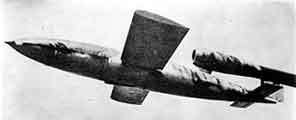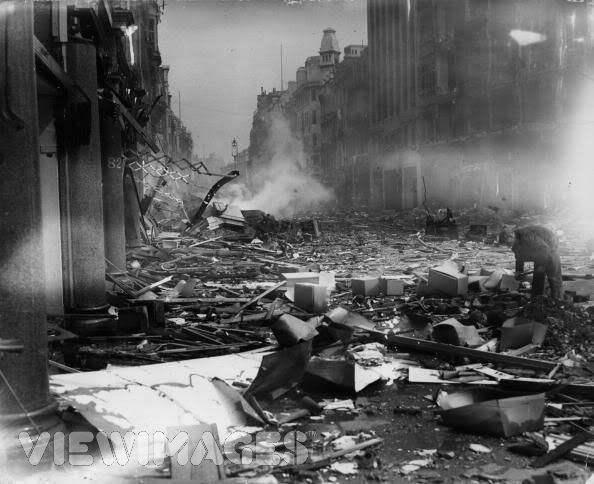So you wanted to hear about the my brush with death by shrapnel, mentioned in yesterday's blog?
Well....
I celebrated my first birthday on April 3, 1944 in the London suburb of Mitcham, close to Croydon. In June of 1944, the first V1 Rockets began to rain down on England's capitol. I really don't think they were out to get me personally, but you can never tell.
I slept through most of it.
My father was a Staff Sargent in the Canadian Army and he was posted overseas in North Africa. My mother had moved back home with her parents for the duration of the war.
The skies of London were filled with barrage balloons, looking suspiciously like the craft of invading Martians from War Of The Worlds. Eventually some 2,000 barrage balloons were deployed in the hope that V-1s would be destroyed when they struck the balloons' tethering cables. Only the Germans had fitted the leading edges of the V-1's wings with cable cutters, and fewer than 300 V-1s are known to have been brought down by barrage balloons.
My grandfather, a WW1 Captain, was a Street Marshal and when sirens sounded he herded the people from his street indoors or into their shelters and made certain no light could be seen from any window, before rushing home himself.
Up to this point, the biggest explosion on his street had been to the backyard of the home next to his. It was ironic, the neighbhour had build a backyard shelter capable of withstanding anything but a direct hit. His wife refused to use the shelter, insisting on staying in the house. And when the bombs came they hit the shelter directly, leaving the home and the wife intact. There was a large crater now where the man in the shelter had been.
My grandparents, my mother and I huddled in the pantry. I was placed in my pram under the stairs. Everyone kept low.
Almost 30,000 V-1s were made. Approximately 10,000 were fired at England; 2,419 reached London, killing about 6,184 people and injuring 17,981. The greatest density of hits were received by Croydon, on the SE fringe of London. Mitcham wasn't that far from Croydon and the guidance systems of the V1 were primitive to say the least.
The V-1 lacked the primary points of vulnerability of conventional aircraft: pilot, life-support, and a complex engine. Hits to the pilot, oxygen system, or complex reciprocating engines of a piloted aircraft by a bullet or small shell fragment destroy its fighting capability, but the V-1's Argus pulsejet provided sufficient thrust for flight even if damaged. The only vulnerable point of the Argus was the valve array at the front of the engine. The V-1's only one-shot stop points were the two bomb detonators and the line from the fuel tank, three very small targets buried inside the fuselage. A direct hit on the warhead by an explosive shell from a fighter's cannon, or a very close anti-aircraft shell explosion, were the most effective forms of gunfire.
As my family huddled in their skullery, they could hear the distant explosions but what they were listening for was the sound of the V1 engine. As long as you could hear the engine you were fine. But when it stopped, it meant it was coming for you and the silence was ominous.
And on this particular day, they heard the engine sputter and stop and waited in the deadly quiet.
Suddenly the rocket exploded with a deafening roar directly across the street from my grandparent's home, window's imploded and shrapnel ripped through the walls of their house while they lay on the floor.
I slept through it all and lived because I slept. When they came to check on me, the hood of my carriage was sliced to pieces from shrapnel. Had I been sitting up, frightened by the noise, I would have resembled the carriage hood.
There is perhaps a lesson in there for coping with very bad times.
Just sleep on it.
A Photo Process
8 hours ago



